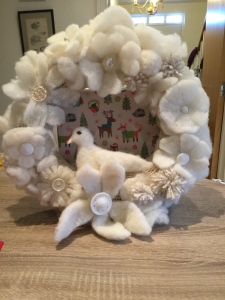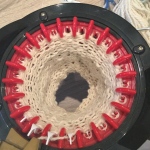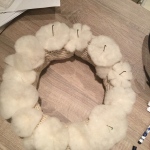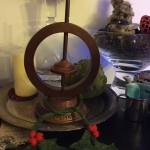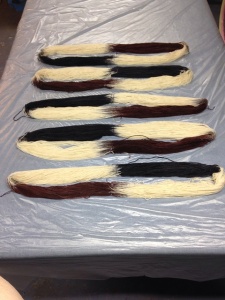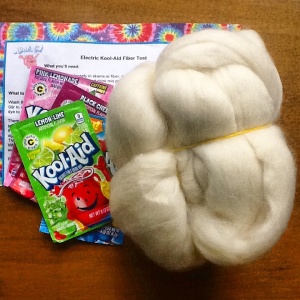
Jumping off point
We received our new guild fiber challenge at the October meeting. It’s pretty straightforward: dye some fiber with some Kool-aid, and make something out of it. The only caveat is that the finished project must show some of the original color of the Kool-aid we used. We were given 4oz of Polworth roving and a couple of packets of Kool-aid to start us along. The final projects are due at the February 2015 guild meeting.
This project is a lot more open ended than the last one, where we had an upper limit of fiber and assigned colors to start out with, and for which my project won a prize. Because of that, I’ve been at a bit of a loss as to which direction to go. My tendency to overthink things isn’t helping. In fact, I’ve been overthinking this for almost two months now.
We were given a piece of paper with Kool-aid dying directions, and the link to this Knitty article. It’s like any other acid-dying, with the added bonus of Kool-aid already containing citric acid. I searched Ravelry for some Kool-aid dyed projects for inspiration, and I found this hat, which uses yarn that is gradient-dyed. She also has a nice blog post about gradient-dying. This is a pretty cool technique, but I’ve talked to a lot of my fellow guild members, and they all seem to think they’re going to dye their yarn after it’s spun. I don’t want to show up with the same project as someone else.

Saxarocks’ gradient-dyed Chrysanthemum Hat; pattern by Xandy Peters
I also considered trying this shibori dying and weaving technique that Rachel did, but my loom is in limbo right now, so until I have a place to set it up, no weaving for me.
I decided to go with the challenge name itself for inspiration, based on The Electric Kool-aid Acid Test by Tom Wolfe, about author and Merry Prankster Ken Kesey (from Oregon!). I’ve read this book, along with Kesey’s One Flew Over the Cuckoo’s Nest. Kesey also has a book called Sometimes a Great Notion, which I bought at Powell’s and have started to read. It’s really, really great, and I regret not reading I sooner, and my finished project will definitely reflect this book in some way.
In the meantime, I’ve embraced the spirit of these books, and put my 4oz of roving in a dye pot along with my Kool-aid, just to see what would happen:
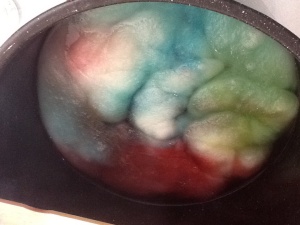
Sprinkle dying

Sprinkle-dyed roving
It’s pretty, but one packet to one ounce of roving did not saturate the roving at all, and I’m left with a lot of white parts. I ended up blending the different resulting color ways on my drum carder, and then spun it according to color for a self-striping effect. This is what I ended up with, 275 yards of 2ply dk weight:

Weird pastel yarn
Verdict? I hate it. The colors are flat. Back to the drawing board.








